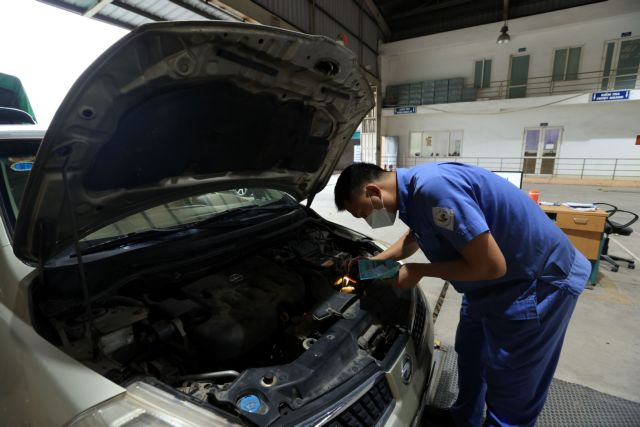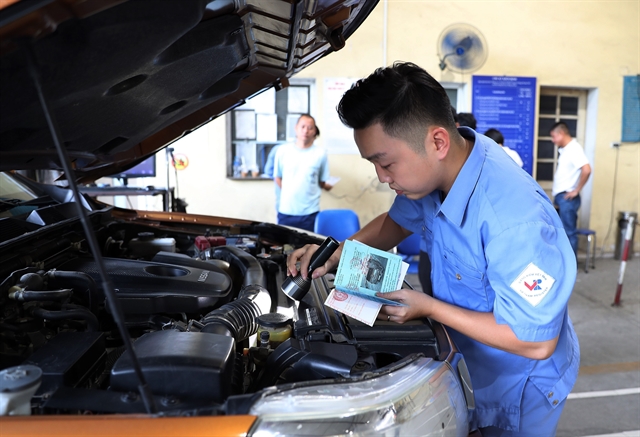 Society
Society

 |
| An car is inspected at a vehicle inspection centre in Hà Nội. — VNA/VNS Photo |
HÀ NỘI — From the start of this year, vehicle inspection centres can be established at bus stations and rest stops, under new regulations to streamline services.
The government has issued Decree No.166/2024/NĐ-CP to revise the rules governing the operation and establishment of vehicle inspection centres.
This decree simplifies business requirements while addressing industry challenges, ensuring transparency and promoting convenience. It builds upon previous regulations and introduces updates in alignment with Việt Nam's Road Traffic Safety Law.
A key highlight of the decree is that it allows inspection centres to share premises with bus stations or rest stops without adhering to stringent space requirements. However, these centres must comply with national technical standards for infrastructure and equipment.
The decree also expands entry-level qualifications for inspectors to include bachelor's or engineering degrees in relevant technical fields.
Inspectors are now classified into three tiers -- Level I, II, and III -- each with distinct responsibilities. Notably, the promotion period from Level II to Level I has been extended to five years from the previous three.
Leadership standards for inspection centres have also been revised. Leaders must now hold at least a Level II inspector certification, broadening eligibility criteria compared to earlier requirements.
The decree also introduces operational flexibility, requiring only a minimum number of inspectors for a centre to function rather than specifying a fixed ratio of inspectors to inspection lines.
Additionally, the authority to issue vehicle inspection certificates is extended to department heads of inspection centres, not just centre leaders as previously regulated.
New standards for motorcycle and motorbike emissions testing facilities are also introduced, designed to align with the 2020 Investment Law and the Road Traffic Safety Law.
For fixed emissions testing centres, a minimum area of 15 sq.m per testing device is required, and these centres can share space with repair shops. Mobile testing facilities are exempt from space requirements, provided the necessary equipment is permanently installed on a specialised vehicle.
Regarding personnel, emissions testing centres must employ at least one certified inspector and a skilled technician. Staff may take on multiple roles if they hold the appropriate professional certifications.
In a significant shift, provincial Departments of Transport will assume full responsibility for evaluating and certifying vehicle inspection centres. Previously, this task required collaboration with the Registry Department, which will now play a supporting role only when requested. — VNS




